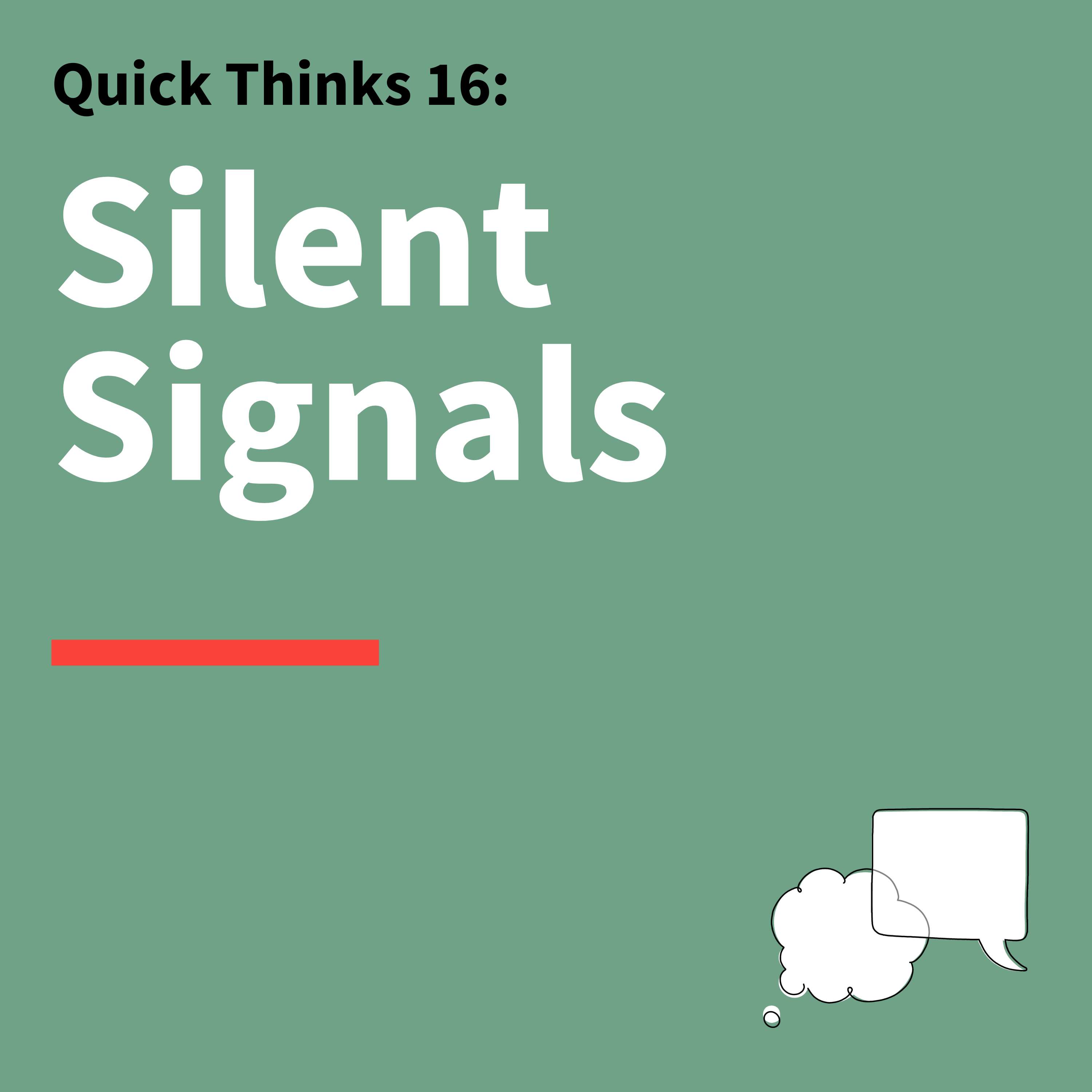16. Quick Thinks: How to Craft Your Body Language When Confronting Objections

Advice on how to position yourself when met with skepticism from your audience.
Knowing what to say to a skeptical audience is paramount, but how can your body language communicate empathy, openness, and power?
In this Quick Thinks episode of Think Fast, Talk Smart, we revisit Matt Abrahams’s conversation with Stanford GSB lecturer Burt Alper about how to keep body language in mind when it comes to handling objections.
Connect:
- Premium Signup >>>> Think Fast Talk Smart Premium
- Email Questions & Feedback >>> hello@fastersmarter.io
- Episode Transcripts >>> Think Fast Talk Smart Website
- Newsletter Signup + English Language Learning >>> FasterSmarter.io
- Think Fast Talk Smart >>> LinkedIn, Instagram, YouTube
- Matt Abrahams >>> LinkedIn
********
Become a Faster Smarter Supporter by joining TFTS Premium.
Take advantage of our Sponsor offer from Superhuman
Matt Abrahams: Using analogies, along with appropriate and responsive nonverbal cues, can help manage tricky objections and challenges. In a prior episode, Stanford GSB lecturer Burt Alper provided several tips and techniques for handling skeptical audiences. Today we provide a few more useful ideas that were not included in the original episode.
My name is Matt Abrahams and I teach Strategic Communication at Stanford Graduate School of Business. Welcome to a Quick Thinks episode of Think Fast Talk Smart, the podcast.
So let’s jump in and learn how body language and help us in difficult situations.
Matt Abrahams: You know we’ve spent a lot of time talking about what we can do with the content during an objection or some skepticism, what are your thoughts on non verbals? What we do with our voice island our bodies? Because a lot of that can work against the words that we’re saying, if we’re not careful.
Burt Alper: The first part is as the speaker quite literally have your eyes open, when you can. I mean in podcast mode, I may not be able to see my audience, but usually when I’m dealing with contentious information my audience is probably going to be in the room or maybe on the video conference. Observing their behavior is a first step. If you see them starting to clamp up or make some manifestation of frustration, lack of clarity, even anger, that’s a signal that something you just said created that reaction. So now you know at what point you got into the contentious content of your discussion. That’s a key clue to how you’re going to respond to that. So it’s always important to observe your audience’s body language in anticipation of these moments
Your own body language in response to that is critical as well. It’s not just your body, but your voice: You don’t want to fight fire with fire. If they start to raise their voice, you raising your voice to match that is not likely to lead to a happy ending. If you can remain calm, and then keep the emotional tension out of your voice, as hard as that is, it does create an interesting opportunity to diffuse. Your body language needs to go along with that, starting with what you’re doing when they’re raising the objection. You want to be an active listener, you want to communicate all of the signals that suggest you have a sincere interest in the concern they have and you’re not going to whitewash over it. It’s important that they feel heard and you want everything in your body to suggest you’re listening attentively to them. That means don’t get your phone out while they’re talking to you, don’t look at somebody else, certainly don’t roll your eyes. You’ve got to put the best visual image of ‘I care about this concern and I want to address your issues.’
Matt Abrahams: So it’s leaning in, it’s standing in a neutral position, arms not crossed in front of your chest.
Burt Alper: Absolutely. Similarly, when you start to respond, I think those same body language cues are valuable in the delivery of your response. Having a strong lower body with an active and open upper body shows that you’re not wilting under the pressure, but you’re also being open and vulnerable. You’re willing to hear the push back. For us, the difference between your lower body being solid and and secure and grounded, versus your upper body being open and in some ways more vulnerable physically, ‘Go ahead and throw your spears, throw your tomatoes. I’m here to receive all that I’m not intimidated by that.’
The other part that we haven’t talked about is the importance of eye contact. In our small studio here I’m enjoying the fact that I can make eye contact with you, in a larger audience it is still critical to make sustained eye contact during your delivery of the information and while the skepticism is being expressed. Humanity appreciates eye contact. We trust eye contact. It is one of the things that if you change that element of your communication style, it tends to have a huge impact on people’s perception of your trustworthiness and of your stability and confidence. So being able to hold eye contact if someone is challenging you, very powerful position in that conversation, and then being able to maintain that eye contact as you deal with the response also shows that you’ve got good conviction in your ideas.
Matt Abrahams:Thanks for joining us for another episode of Think Fast Talk Smart, produced by Stanford University’s Graduate School of Business. For more information and episodes visit gsb.stanford.edu or subscribe to our show wherever you get your podcasts. Find us on social media @StanfordGSB.
